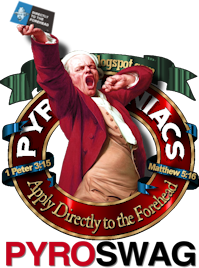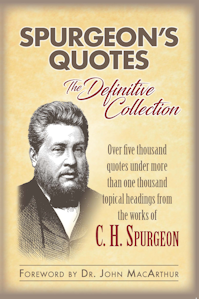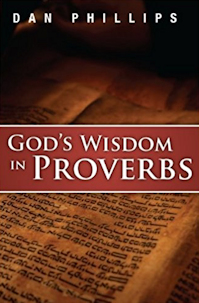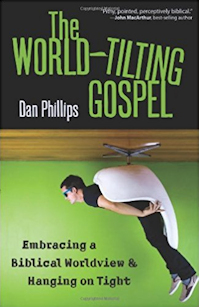This excerpt is from the original PyroManiac blog back in July 2005. Phil deals with the fleeting fads of evangelicalism as a warning to remember what is really happening when a "movement" starts.
 Virtually all the people on Time magazine's list of "The 25 Most Influential Evangelicals" share at least one glaringly significant trait:
Virtually all the people on Time magazine's list of "The 25 Most Influential Evangelicals" share at least one glaringly significant trait:For the most part, these are the fadmakers. They are the cheerleaders for whatever is fashionable. They are the designers of the programs that are peddled by the out-of-control Christian publishing industry and purchased and implemented with little critical thought or concern by hundreds of thousands of people in the movement that calls itself "evangelical."
- Rick Warren, who heads the list, is the chief architect of the currently-dominant fad, "Forty Days of Purpose" and all the other Purpose-Driven® spinoffs.
- Tim Lahaye is the "theological" mind behind the best-selling fad of all time—the "Left Behind" series.
- J. I. Packer and Richard John Neuhaus have been the prime movers in the ecumenical fad—probably the last bandwagon we would have expected evangelicals to jump aboard 20 years ago.
- Bill Hybels masterminded the "seeker-sensitive" fad.
- Brian McLaren basically took Hybels' strategy ("contextualizing" the message for the extant culture) to the next level. McLaren is the leading figure in the "emergent church" fad.
- James Dobson is the most powerful figure in the "culture war" fad.
Too bad for Bruce Wilkinson that Time didn't do this piece two years ago when the "Jabez" fad was still hot, or he would have almost certainly been near the top of this list. The fact that he didn't even get mentioned is a testimony to how fleeting the fads can be.
Fifteen minutes of fame
Someone will almost certainly challenge whether it's right to label all those trends and programs "fads." But that is exactly what they are. They are popular for the moment, but they have nothing to do with historic evangelicalism or the biblical principles that made evangelicalism an important idea.
Not one of those movements or programs even existed 35 years ago. Most of them would not have been dreamed of by evangelicals merely a generation ago. And, frankly, most of them will not last another generation. Some will last a few short months (like the Jabez phenomenon did); others may seem to dominate for several years but then die lingering deaths (like Bill Gothard's movement is doing). But they will all eventually fade and fall from significance. And some poor wholesale distributor will be left with warehouses full of Jabez junk, Weigh-Down Workshop paraphernalia, "What Would Jesus Do?" bracelets, Purpose-Driven® merchandise, and stacks and stacks of "emerging church" resources.
...
How post-evangelicalism gave birth to the Fad-Driven® Church
So why has the recent culture of American evangelicalism—a movement supposedly based on a commitment to timeless truths—been so susceptible to fads? Why are evangelical churches so keen to jump on every bandwagon? Why do our people so eagerly rush to buy the latest book, CD, or cheap bit of knockoff merchandise concocted by the marketing geniuses who have taken over the Christian publishing industry?
To borrow and paraphrase something the enigmatic Dissidens recently blogged (see "Remonstrans"), evangelicals and fundamentalists alike "have a genuine affection for the ugly and the superficial, whether in their art, their preaching, or their devotion." A few years ago, marketing experts learned how to tap into evangelicals' infatuation with the cheap and tawdry and turn it into cash.
Some of the beginner-level fads have seemed harmless enough—evangelical kitsch like Kinkade paintings, Precious Moments® collectibles, singing songbooks, moralizing vegetables, bumper stickers, Naugahyde® Bible covers, and whatnot. Such fads themselves, taken individually, may not seem worth complaining about at all. But collectively, they have created an appetite for "the ugly and the superficial." They have spawned more and more fads. Somewhere along the line, evangelicals got the notion that all the fads were good, because the relentless parade of bandwagons gave the illusion that evangelicals were gaining significant influence and visibility. No bandwagon was too weird to get in the parade. And the bigger, the better.
As a result, several of the more recent fads have been downright destructive to the core distinctives of evangelical doctrine, because most of them (Promise Keepers, Willow Creek, and the various political and ecumenical movements) have taken a deliberately minimalistic approach to doctrine, discarding key evangelical distinctives or labeling them nonessential. All of them adhered to a deliberate strategy that was designed to broaden the movement and make each successive bandwagon bigger and easier to climb onto.
"Bandwagons"? Somewhere along the line, the bandwagons morphed into Trojan horses.














No comments:
Post a Comment